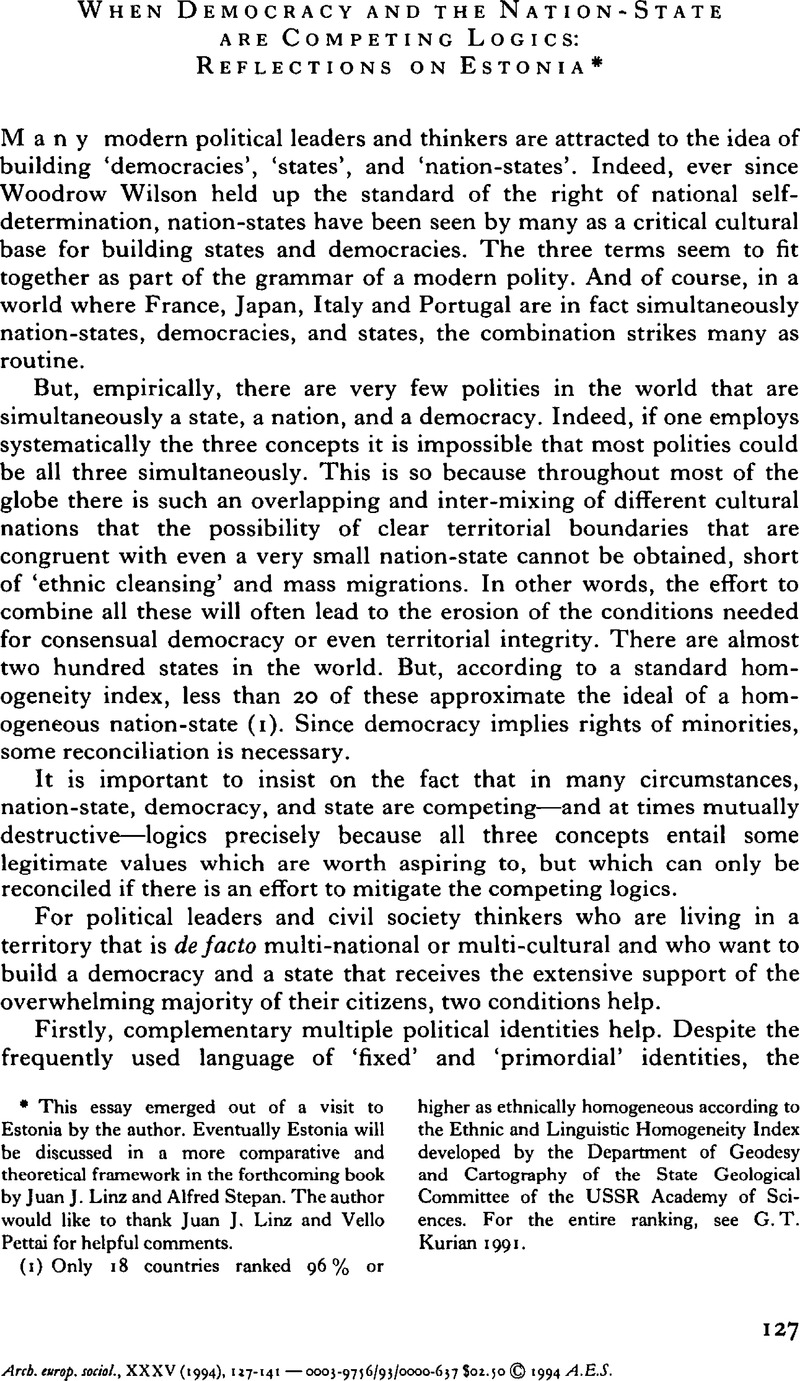Crossref Citations
This article has been cited by the following publications. This list is generated based on data provided by Crossref.
Rüb, Friedbert W.
1996.
Systemwechsel 2.
p.
37.
Dion, Stéphane
1996.
Why is Secession Difficult in Well-Established Democracies? Lessons from Quebec.
British Journal of Political Science,
Vol. 26,
Issue. 2,
p.
269.
Spencer, Philip
and
Wollman, Howard
1997.
Nationalism and democracy in the transition from communism in Eastern Europe.
Contemporary Politics,
Vol. 3,
Issue. 2,
p.
171.
Arfi, Badredine
1998.
Democratization and communal politics.
Democratization,
Vol. 5,
Issue. 1,
p.
42.
Arfi, Badredine
1998.
Ethnic fear: The social construction of insecurity.
Security Studies,
Vol. 8,
Issue. 1,
p.
151.
Evans, Geoffrey
1998.
Ethnic Schism and the Consolidation of Post-Communist Democracies: The Case of Estonia.
Communist and Post-Communist Studies,
Vol. 31,
Issue. 1,
p.
57.
Evans, Geoffrey
and
Need, Ariana
2002.
Explaining ethnic polarization over attitudes towards minority rights in Eastern Europe: A multilevel analysis.
Social Science Research,
Vol. 31,
Issue. 4,
p.
653.
Taylor, Solange G.
2002.
Multilingual Societies and Planned Linguistic Change:New Language‐in‐Education Programsin Estonia and South Africa.
Comparative Education Review,
Vol. 46,
Issue. 3,
p.
313.
Pachuashvili, Marie
2007.
Private Higher Education in Post-Communist Europe.
p.
75.
2021.
Ethnic Domination in Deeply Divided Places.
Vol. 8,
Issue. ,
Jou, Willy
and
Ooi, Kok Hin
2022.
Political support in an ethnically divided society: a case study of Malaysia.
Asian Journal of Political Science,
Vol. 30,
Issue. 1,
p.
61.



